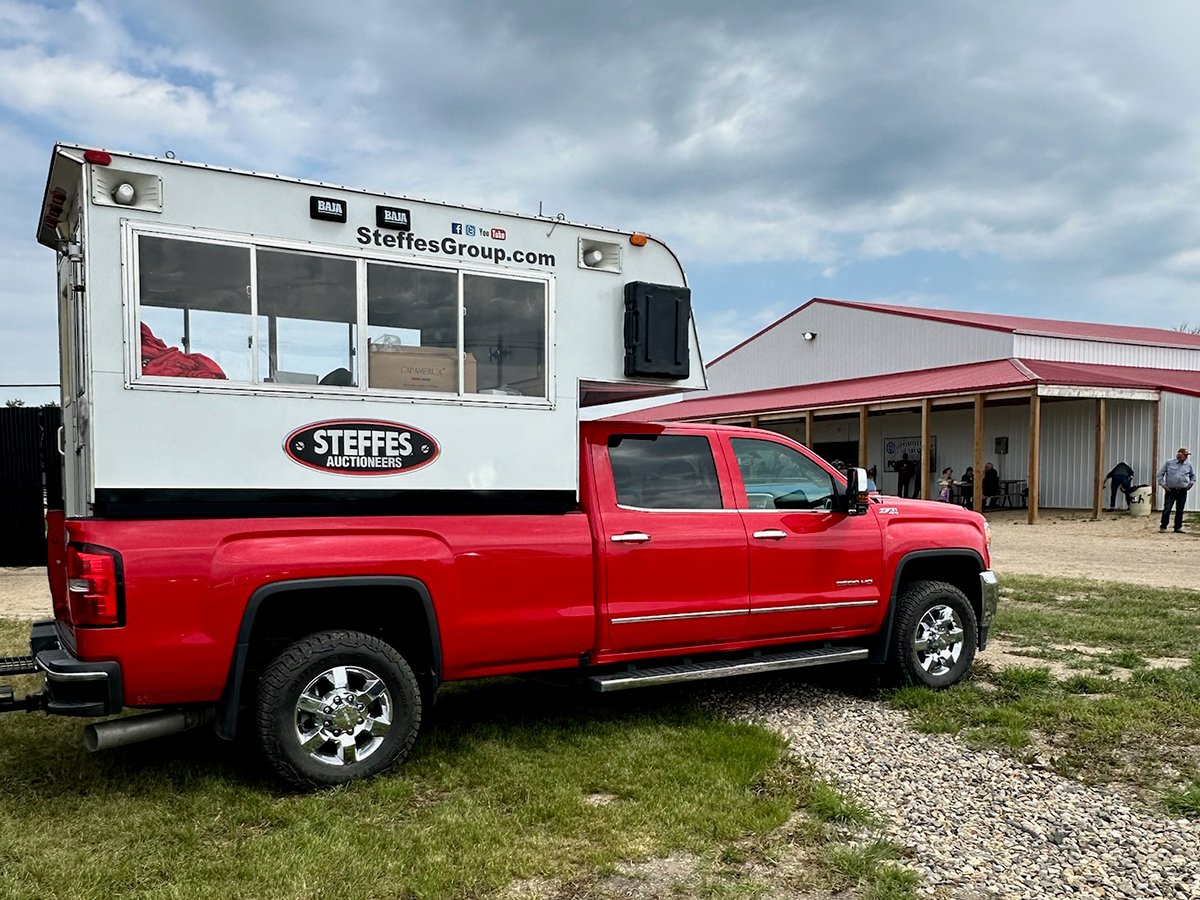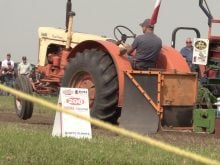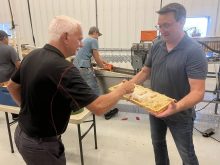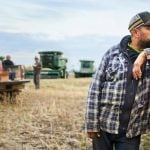COUTTS, Alta. – When the RCMP came to investigate Colleen Bianchi’s run-over mailbox, she sent her son Dusten to meet them.
Even the police can get lost looking for a particular spot on the gravel roads that wind through the steep coulees and around the hills of this borderland country.
Airborne dust tracks a vehicle passing by the Bianchi farm, which stretches in patches for 56 kilometres along the Alberta-Montana line.
Colleen and her husband Boyd own 21/2 sections to grow durum and barley and rent another section for pasture and hay to raise their 150 cattle. It is a three-hour combine drive from one end of their land to the other.
Read Also

Farm auctions evolve with the times
Times have changed. The number of live, on-farm auctions is seeing a drastic decline in recent years. Today’s younger farmers may actually never experience going to one.
On May 3 they were helping a neighbor seed his crops, even though moisture was low.
Boyd and the neighbor checked the soil into which they were airseeding Kyle durum. It was cool and vaguely damp, but Boyd said the ground was drying up as he opened it to plant the seed. They may not get a crop if it stays dry, said the neighbor, who shrugged and asked, what else can a farmer do?
The Bianchis are softening that hard luck by buying crop insurance for the first time since 1988. They have also switched to no-tillage to hang onto their soil in a tug of war with the never-ending wind. And in the middle of their month-long seeding, which began April 29, they and other shareholders in the community pasture were laying water pipes 24 km to the Milk River.
Only one of the two pastures is open this year and signs warn of fire hazard. A pond on the Bianchi farm dried up last June, the first time Boyd’s father had seen the bottom of it in his 81 years.
Last July, Boyd and Dusten joined their neighbors in Alberta and Montana to put out several fires started by lightning or machinery. They’re expecting a similar summer of action.
Besides doing the farm’s books, running chores and some truck driving, Colleen has her own agenda. She is the family spokesperson, serving on a number of agricultural fronts.
“I’m not one to sit back and complain,” she said.
“I feel if you have an issue or concern, you should voice it. I get tired of apathy. Complain, but then do something.”
Her view of life is that you have to put something back into it. So starting with her local church and school, Colleen has gone on to work in the Alberta Women’s Institutes, the Alberta Farm Women’s Network, and ad hoc committees such as the Alberta Agriculture Summit and the Focused American-Canadian Team.
The latter group, in which Alberta and Montana farmers discuss common sense solutions to joint problems, met often in 1999 but has rested this past year. Some of FACT’s ideas include standardizing chemical rules, ensuring the producer has some power and fair prices, continental marketing with no blocks at either border, and consumer education.
Bianchi was born in a Montana town 120 km from her present farmyard. She moved to Alberta as a young child, but became a Canadian only after her first pregnancy.
In 1998, she ran as a dual market candidate in the first Canadian Wheat Board elections. While she didn’t win, she hopes the economics are better for grain farmers when her district seat comes open in 2002.
While neither of her two daughters farm, her son and husband share Colleen’s view of the wheat board. They grow board-regulated crops, but would prefer to sell by themselves to neighbors feeding cattle or to a potential pasta plant. Boyd questions all the deductions on his grain cheques, and switched grain company allegiance when the local elevators closed.
The Bianchis also support the Farmers For Justice group that illegally trucked grain across the border to prove a point about having the freedom to market. Boyd and Colleen still keep in touch with an informal network through prairieÐwide conference calls. They exchange information and provide each other with verbal support.
Dusten said his mother is involved in “way too much,” but he’s proud of her efforts, saying she gives 110 percent. He is graduating from Grade 12 this year and is renting his first land, as well as farming with his parents. He knows what he wants to do: take a course in agricultural mechanics, followed by farming in the summers and oil patch work in the winters.
His mom kidded that he is “a rare jewel” among his classmates, most of whom either don’t want to farm or who can’t see any money in it.
Dusten’s love of farm life is partly an appreciation of the bird songs, cow bellows and open air, mixed with a desire to “do his own thing.” He
doesn’t plan to farm organically because he doesn’t like weeds in the crop, and he isn’t worried about genetically modified varieties. He will be the fourth generation to farm on both his mom and dad’s sides of the family.
Colleen’s main interest now is the need to educate urban people about where their food comes from. She volunteers to speak to students as part of the Agriculture in the Classroom program and helped publicize the Canadian Farm Women’s Network’s gold ribbon campaign for farm families.
She also runs a bed and breakfast operation, not just for the money, but also to show hunters and tourists the work on the Sweetgrass Triple B farm.
Colleen jokes that Focus on Sabbatical’s idea to withhold grain from the market to underline the need for a better price will happen this summer because it will be too dry for a crop.
But she is good-natured about what the world throws her way. It comes natural to a child raised in the town of Hoping in Alberta’s Faith district who attended a church called Charity.














